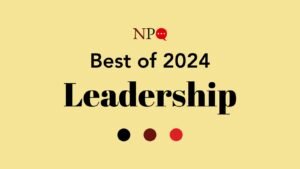The following is a transcript of the video above, from our webinar “Remaking the Economy: Worker Self-Directed Nonprofits in Practice.” View the full webinar here.
Yani Burgos: We do an annual 360 review, so that includes peers but actually isn’t exclusive to peers. We encourage folks to send out their 360 evaluation beyond the organization. A lot of us do various kinds of consulting. Some people bring their families in, to really get like a full sense of how are you living in the world? Both through the container of work and our lives.
And I kind of function as the peer-support role of distilling the information, making sure everybody gets their own process, and hav[ing] collective meetings with folks.
We do a quarterly evaluation of each other.…Where are the places where we’re thriving.…And where are places that need attention?
But we also do a quarterly evaluation of each other individually. We kind of frame it as a glow and a grow. So where are the places where we’re thriving and we’re showing up well within the work that we’re doing? And where are places that need attention?
And then, ideally, monthly—we do not do it monthly—we also do an evaluation of how are we working together in our culture. We call it a covenant touchpoint, where some of the structural work that we’ve been talking about here, like the need for regular touchpoints and structure happen there so that, again, there’s like a focal point between how we are functioning and how we’re doing our work, and how is the team maintaining systems and structures and practices.
And when there is conflict that emerges in the midst of any of these levels, we have a system, or a circle, called the circle of elders. So, these are folks who are representative across age—because they are not just elders in a traditional sense—who have been identified as trusted individuals across all of the systems and structures that we work in, who have been empowered to hold transformative justice processes when there is conflict in a way that we ourselves cannot and maybe should not be the only ones holding. And they have been empowered by the board to make any decisions—binding decisions—so whether that is a conflict that leads to a dismissal of a staff person, a conflict that leads to a very specific growth plan, we very intentionally are like, here’s what we can take responsibility for, and here’s the structure when we can no longer take responsibility for this.












